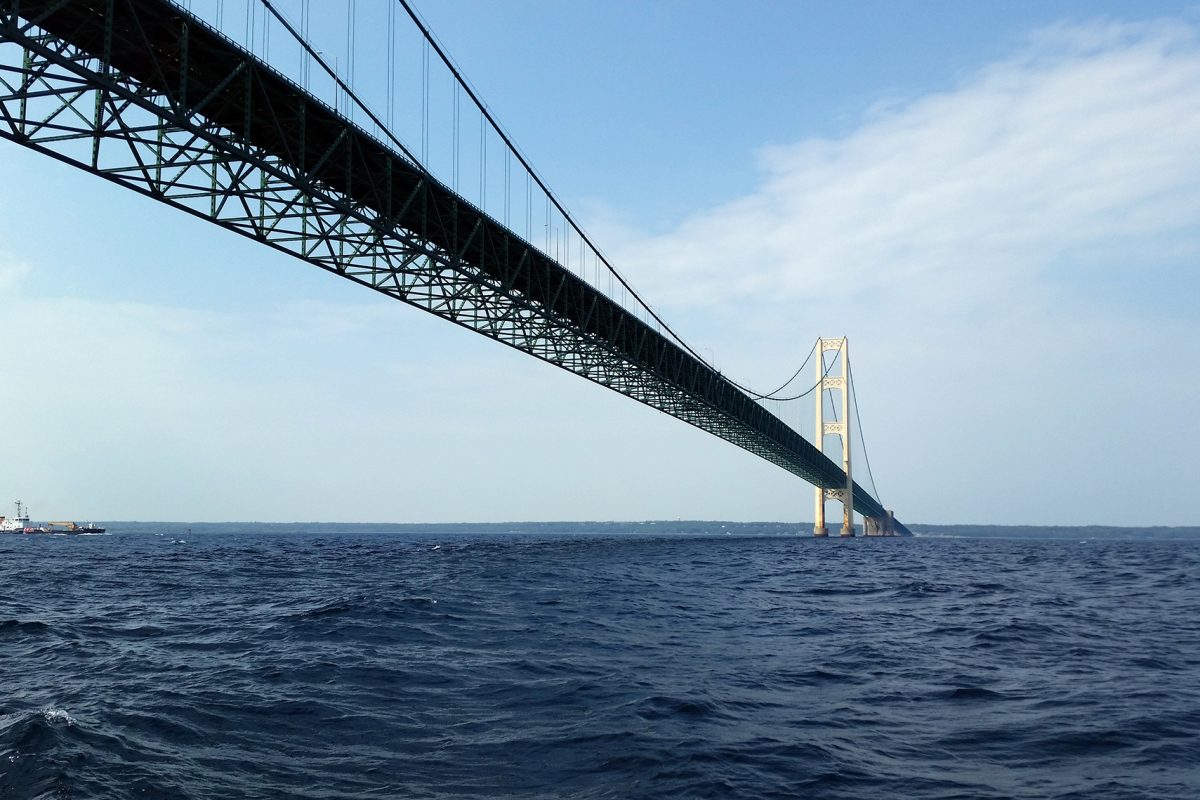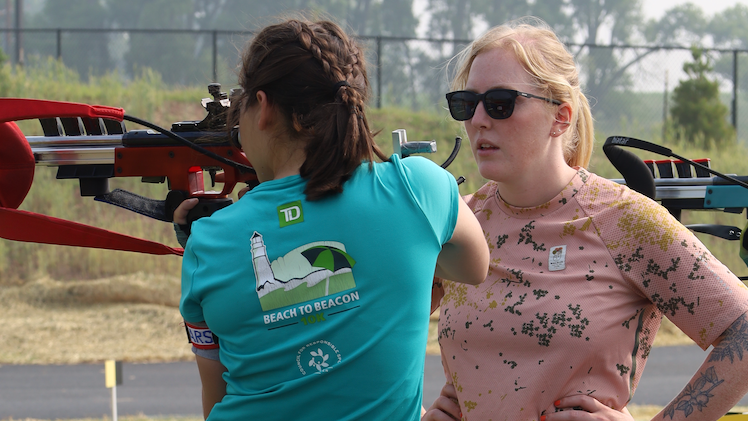Note: This is the first of two pieces based on an interview with Biathlon Canada’s High Performance Director, Chris Lindsay, from earlier this spring.

Any way you look at it, 2012 was a good year for Canadian biathlon on the World Cup.
Jean-Philippe Le Guellec, Brendan Green, and Zina Kocher all notched multiple top-tens. While Green continued an ascent that began with top-20 finishes in 2010 and 2011, for the older two athletes, the results were a return to form: Le Guellec, who was the top Canadian at the Vancouver Olympics, had suffered from mono in 2011, and Kocher, a former World Cup podium finisher, had struggled mightily that year.
Add a handful of points-scoring performances each by Megan Imrie and Scott Perras and one by Nathan Smith, and the team seemed to be right on track.
But the sport’s governing body, Biathlon Canada, faces the same challenges as many of its counterparts in countries where nordic sports are not king: lack of funds. This spring the organization’s major partner, Own The Podium (OTP), decided to pull part of its funding from the sport.
“OTP reviewed our performances this year and decided that none of our biathletes met the standard for targeted funding for the 2012-13 season,” Biathlon Canada High Performance Director Chris Lindsay wrote in an e-mail last week. “They are looking to help athletes on the verge of World Championships and Olympic medals to turn into sure bets. The reality is that our athletes were not at that level – basically being top five performer on average over a season.”
Kocher, the top-ranked Canadian at the end of 2012, landed 19th in the overall World Cup standings; she finished ninth in three separate races. While Lindsay admitted that his athletes didn’t meet OTP’s criteria, he suggested that the criteria themselves were not ideal for a sport like biathlon.
“Meeting this level of success in biathlon is very difficult due to the more chaotic and unpredictable results – for instance 23 different men were on the World Cup or World Championships podium this year, which is more than twice what you would see in most other sports,” Lindsay wrote.
FasterSkier originally interviewed Lindsay in early April, before the OTP budget cuts were announced. Then, he said that OTP laid out tough criteria and demanded change from Biathlon Canada – but that he thought the changes were improving the federation. The following is based on that conversation.
We Want Medals
Own The Podium was started before the 2006 Olympic Games in Torino with a goal of targeting potential medal winners and helping them reach gold. The program expanded further for the 2010 Games, held on home soil in Vancouver. Its attitude represented a major change for sports in Canada.
“The project was essentially created to try to drive our national organizations away from a participative model in Canada, where we would eventually have success internationally because were engaging large numbers of beginner athletes and we would have a trickle-up system,” Lindsay said. “OTP is the exact opposite. They target individuals within sports, and they will target specific sports where they feel that they have a strategic opportunity for success.”
The participatory model had worked well for Canada’s most popular sport, hockey. But OTP, a joint venture between the government and corporate sponsors, had its own successes, for instance in some of the newer freestyle winter sports, and in speedskating. Biathlon wasn’t an obvious choice for this targeted funding – Lindsay said that OTP initially reached for “low-hanging fruit,” sports where the group could quickly make a difference.
“In very mature sports with an extremely competitive international field, like biathlon, I would suggest that this poses challenges for us in order to get additional funds,” Lindsay said. “But because there are 33 medals in biathlon and slightly more than that in cross-country, OTP has seen that we are going to need to tackle this project eventually… we’re going to tap out the market in freestyle and curling.”
Another challenge was that OTP specifically targets Olympic and World Championship medals – “You can win all the World Cup medals you want and it doesn’t matter,” Lindsay lamented – and in biathlon more than most sports, it isn’t just the top-ranked athlete who is capable of winning.
In Vancouver, for example, gold medals went to Anastisiya Kuzmina of Slovakia, who finished the year ranked 20th, Vincent Jay of France who ranked 11th, and Bjorn Ferry of Sweden who ranked 16th. At 2012 World Championships, Slovenia’s Jakov Fak won the individual race before finishing the season ranked 17th. None of those athletes were slouches – all had multiple World Cup podiums – but they show how unpredictable biathlon can be.
All of which meant that when OTP looked at the sport of biathlon, their metric for whether any athletes were future medal-winners didn’t seem encouraging. They saw a sport where a lot of work needed to be done.
Central Planning
Biathlon Canada is a membership organization – it has 60 clubs nationwide and thousands of members – and Lindsay said that in the past, the federation’s biggest strength was encouraging participation in the little-known sport and developing talented juniors (Canada has won a bevy of World Youth and Junior Championships medals in the last decade).
“The business of running the national team is done by a subset of staff who report through the executive director to the board… which has authority over the budget,” Lindsay explained. “That can be a benefit and can also cause some frustration, because the people who sit around the board table tend to be the presidents to their divisions as opposed to being experts on biathlon. They are very good at running volunteer-driven organizations, but don’t necessarily have expertise at how to get people onto the podium.”
OTP saw this broad-based, highly regional model – which was not unusual for the post-Calgary push for higher participation in sports in Canada – and demanded changes. The federation complied.
“Biathlon Canada is in a period of transition now,” Lindsay said. “We are trying to move to an updated structure. There will still need to be a board with regional representation because the membership are served well by that, but the reporting structures regarding high performance are being reworked in order to make sure that the high performance group has the autonomy, the authority, and the responsibility required to actually converge into medals.”
OTP’s other big push, across all sports, is centralization of high performance resources. So the national team is also spending more and more time in the Calgary/Canmore area (OTP reportedly suggested this to Cross Country Canada as well). Besides the benefits of the Olympic venue, Lindsay said that OTP has offered “targeted funding” to establish what it calls integrated support teams to the area: sports scientists and doctors, physiotherapists and psychologists.
“Centralization is both a carrot and a stick from our funding partners,” Lindsay explained. “They encourage you to centralize as much as possible, because you will have access to better training facilities instead of putting your own money into training facilities. But also they say things like, ‘well, we’re asking you to centralize, and if you don’t, you run the risk of not being able to access these funds because we think this is the best strategy.’”
In June, a brand-new, $200,000 rollerski treadmill was installed in Canmore; both the nordic and biathlon teams have been making use of it. Later this summer, Lindsay said, a new shooting facility will be finished which will rival the well-known lab at the University of Salzburg in Austria. Many national teams travel to Salzburg throughout the year to analyze their shooting, but Canadians will now be able to stay at home.
Nevertheless, the federation has been somewhat hesitant about a full-blown move to Calgary; they also have a training center in Quebec, at the Myriam Bedard Center, where athletes like Le Guellec got their start.
“Cross country has done a better job of [centralizing], and part of that is that they have been able to have the outside funding from other corporate sponsors that allows them to leverage their position, and still have a regionally-based development program with centers in the west and the east and central,” Lindsay said. “We have less visibility and… there’s no guarantee of the benefits.”
Commitment, Then A Letdown
Still, the federation came around to the idea of centralization and has slowly but surely been making changes.
“But we are moving strongly now in that direction, with more time being spent by the non-Canmore athletes here,” Lindsay said this spring, speaking from his office in Canmore (Biathlon Canada’s headquarters are still in Ottawa).
“The government has been putting a lot of investment into this training center,” he continued. “We’ve said, okay, we’re going to commit to this and do whatever it takes. We’re finally getting the message – everyone in the organization is getting it – that we are going to need to do things differently if we are going to survive, and not just survive but excel.”
But excel to whose standards? For OTP, the changes weren’t enough, and the athletes, despite the improved results in 2012, still aren’t close enough to gold. The decreased funding will be a major blow to the federation’s high performance program, but the team will have to adjust – and try even harder to make the podium.
“These are the standards and we will continue to try to meet them,” Lindsay wrote last week in an e-mail. “I am optimistic that despite the cuts we will still be able to support our athletes at levels which will optimize their performances.”



